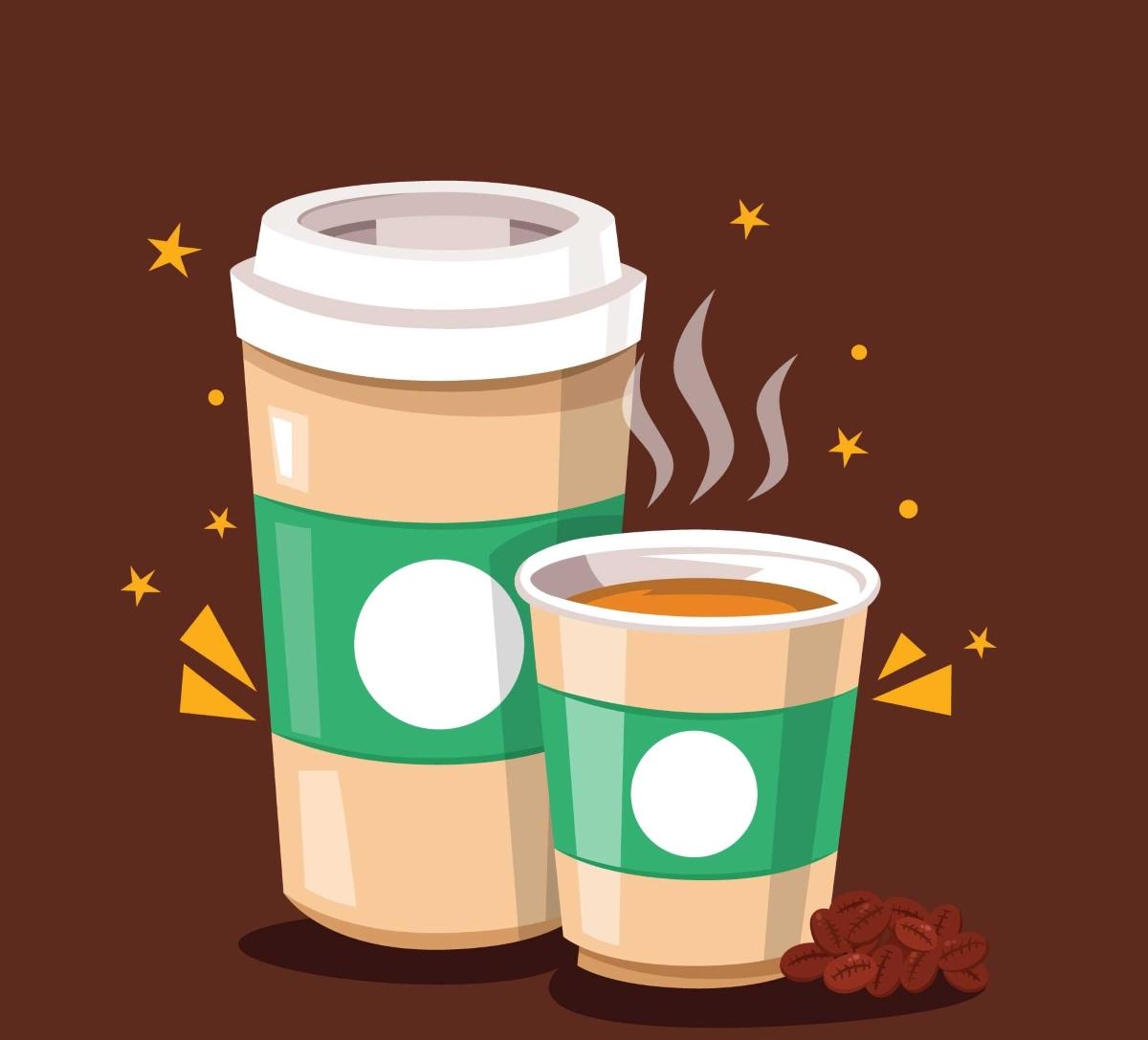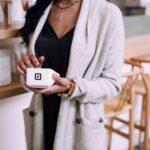No need to mention that spending the whole day without smartphones is like life without air. We rely on countless mobile apps to do various tasks, from managing finances to finding jobs to ordering takeout to online shopping to entertainment to finding locations.
Approximately 67% of Fortune 500 companies connect with customers through mobile apps, according to a study conducted by Oracle. Something must be the cause of it!
Research from 2022 indicates that about 80% of people on the planet primarily rely on smartphones, using them for an average of 4.8 hours daily. Additionally, there were approximately 7.26 billion smartphone users worldwide in 2022, predicted to increase to 7.49 billion by 2025.
If you want to be a part of this successful growth, it’s essential to know how Starbucks have increased their sales through mobile app development.
In this blog, we will explore ways to shine in the market through mobile app strategies like Starbucks.
Starbucks Success Story
Starbucks is an American multinational chain of coffee shops where coffee lovers would want to visit. Starbucks is the most famous coffee shop chain worldwide, with more than 35,711 stores across 80 countries.
Following an analysis of its global appeal, Starbucks released a mobile app in 2009 that allowed fans of the brand to locate nearby locations, view nutritional information, and utilize an interactive drink builder. This choice has dramatically influenced its sustainability and level of brand awareness.
Starbucks implemented an in-app payment feature into their app in 2011 for fast and ease payment process. It’s a fantastic complement to brand loyalty and the Starbucks Card.
To improve the customer experience, Starbucks implemented mobile ordering in 2014 by allowing customers to order coffee online and pay instantly for takeout while on the go. It removed their need to stand in a long, exhausting line to get their favorite beverage.
Starbucks was the top mobile app in the USA until Apple Pay surpassed it in 2021 with 43.9 million users; with 31.2 million users, Starbucks is in second place.
In 2017, Starbucks used ML technology to increase customer loyalty via personalization on its app. Additionally, it unveiled its in-app loyalty program, which allows users to accrue points for purchasing any kind of beverage or other product through both the mobile app and physical stores.
Approximately half of Starbucks’ business is driven by this loyalty program. Thanks to the app, the number of Active Starbucks Rewards members in the US has been rising every other year by 13–18%. In 2022, about 27.4 million members accounted for 52–53% of total store sales.
As per the generational breakdown of Starbucks App users, 31-40% of millennials (ages 21–38), 24% of Gen-Xers, and 14% of baby boomers have the app installed on their phones.
Based on Starbucks’ current financial updates, “Starbucks Rewards loyalty program 90-day active members in the US increased to 30.4 million, up 15% annually.”
Additionally, Starbucks notes a yearly increase in mobile orders of 7–10%.
Outstanding Results from Starbucks App:
-
The Starbucks mobile app has a user-friendly, visually appealing, and engaging user interface (UI). It makes it easy for users to navigate and find what they need quickly, from sign-up and onboarding to safe payment execution.
-
It gives consumers fantastic, engaging, enjoyable customization options that aren’t taxing.
-
Allows users to place orders from the Starbucks menu via the mobile app.
-
The Starbucks rewards program is incredibly user-friendly and transparent, providing clear instructions on how to accrue and use loyalty points.
-
Easy to use and convenient
Ways How Starbucks Boosts Sales Through Mobile Apps
Using User Behavior Analytics
Businesses can better understand their target market and customize their app by monitoring users’ data through data analytics services. It can lead to enhanced customer loyalty, more downloads, higher engagement rates, and, ultimately, more sales.
For example, Starbucks has increased sales by leveraging analytics. It sends personalized notifications based on previous purchases, such as “get a latte today,” with promos customized to each user’s taste.
Ultimately, a better understanding of customer preferences results in more sales for top coffee brands such as Starbucks.
Optimizing an App for Maximum Reach and Sales
Do you wonder how Starbucks has achieved massive growth in its sales by leveraging mobile app development solutions? Optimizing an app for maximum reach and sales is the secret behind this success. Here are a few strategies:
Use Features Strategically
An app’s features can either attract and retain users or drive them away. So, Starbucks ensures their app has features like loyalty plans and push alerts to entice users to return and use their products more frequently.
To continuously hone and enhance the user experience over time, they also use mobile analytics to monitor user engagement with the app.
Targeted Advertising
Starbucks used another strategy to attract new visitors to their apps, which is targeted advertising. Without paying for pricey forms of advertising like television or radio commercials, companies can increase their reach and sales by targeting ads to specific user types, such as those who live in a particular area or those who have already expressed interest in their products.
Incentives
Lastly, companies employ incentives within their apps, such as special discounts, offers, and loyalty points, to entice users to return and utilize their goods and services repeatedly. It aids in the development of long-lasting relationships between them and their clients.
Engaging Mobile Shopping Experience
Interactive features found in mobile apps let users accomplish more when they shop online. In addition to serving as a platform for shopping, mobile apps have exciting features. Make wise product choices, for example, by utilizing instructional content and cutting-edge technologies such as AR/VR, AI, IoT, etc.
So, brands can increase sales by using mobile apps to give customers a smooth and enjoyable mobile shopping experience.
Customized Customer Experience
Traditional marketing techniques cannot address a customized or personalized product purchasing experience. Clients must depend on the web or other sales platforms’ limited capabilities. However, since mobile apps allow for customization and personalization of the user experience, companies could more effectively display their goods or services in the interests of their clients.
Customer data can be gathered by mobile apps, which can also offer data analytics to predict customer behavior. With this information, brands would be better able to tailor their sales and marketing strategies to each customer’s preferences and needs.
Nowadays, many top businesses employ specialized mobile app developers to create unique app solutions to sell their goods on mobile platforms.
Loyalty Programs and Rewards
Mobile apps are an effective and efficient way to run customer loyalty programs. Loyalty programs are incorporated into the mobile apps of many well-known brands. Customers prefer mobile platforms that offer exclusive rewards, discounts, and reward points to app users because they spend most of their time on smartphones and apps.
Businesses could forge relationships with clients and promote repeat business in this way. Mobile apps encourage users to take actions that will boost sales and build trust and brand reputation.
Gamification Features
Traditional methods of marketing and sales are unable to captivate users or provide them with an enjoyable browsing experience. Leading brands are conscious of this. As a result, they profited from people’s desire to use smartphone apps and features. To increase user engagement, they added interactive elements and gamification to their mobile apps.
For instance; interactive product demos, games, competitions, and prizes. Because of these gamification features, users enjoy using the app more, which increases revenue. Gamification is a popular feature that iOS app developers use to add interactivity and make their apps more engaging for users.
The Bottom Line!
Thus, mobile apps have completely changed how companies interact with consumers and increase revenue & get higher sales. They take advantage of the increasing popularity of smartphones and mobile apps to provide smooth shopping experiences, tailored products, and improved customer service.
Therefore, by leveraging the potential of mobile apps, Starbucks could revolutionize their sales growth. Consequently, companies that have yet to integrate mobile applications into their sales strategies are missing out on exciting new prospects.
If you fall into that category as well, it’s time to embrace this game-changing technology. It’s advised to contact an upscaling mobile app development company like VLink.
They are experts in cutting-edge native and cross-platform software development through industry-leading technologies like Cloud, DevOps, AI/ML, etc. Their professional development team understands how important your business is, especially if you want to stand out from the crowd.


